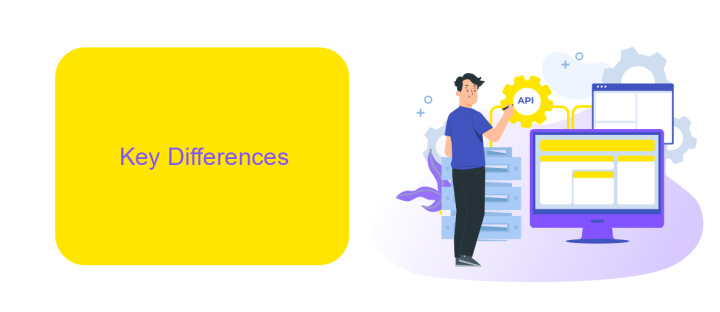Tibco Rv Vs Ems
In the realm of enterprise messaging systems, choosing the right technology can significantly impact your organization's efficiency and scalability. This article delves into a comparative analysis of Tibco Rendezvous (Rv) and Tibco Enterprise Message Service (EMS), two prominent solutions in the market. By examining their features, performance, and use cases, we aim to provide insights that will help you make an informed decision.
Introduction
In the ever-evolving landscape of enterprise messaging, choosing the right middleware solution is crucial for seamless integration and efficient data exchange. Two of the most prominent players in this domain are Tibco Rendezvous (Rv) and Tibco Enterprise Message Service (EMS). Both solutions offer robust capabilities, but they cater to different needs and use cases.
- Tibco Rv: Known for its high-performance messaging, ideal for real-time data distribution.
- Tibco EMS: Provides a more flexible and scalable messaging infrastructure, suitable for a variety of enterprise applications.
Understanding the key differences between Tibco Rv and EMS can help organizations make informed decisions based on their specific requirements. Additionally, leveraging integration services like ApiX-Drive can simplify the process of connecting these messaging systems with other enterprise applications, ensuring a smooth and efficient workflow.
Key Differences

TIBCO Rendezvous (Rv) and TIBCO Enterprise Message Service (EMS) serve distinct purposes in the realm of messaging middleware. TIBCO Rv is primarily designed for high-performance, low-latency messaging, making it ideal for real-time data distribution in financial services and other time-sensitive applications. On the other hand, TIBCO EMS is a robust, standards-based messaging platform that supports both point-to-point and publish-subscribe messaging models, offering greater flexibility and reliability for enterprise-level integration needs.
One of the key differences lies in their architecture and protocol. TIBCO Rv uses a proprietary protocol optimized for speed, while TIBCO EMS leverages industry-standard protocols like JMS, making it more versatile for integration with various systems. Additionally, TIBCO EMS offers better support for transactional messaging and persistent storage, which is crucial for applications requiring guaranteed message delivery. For businesses looking to streamline their integration processes, tools like ApiX-Drive can further enhance the efficiency of TIBCO EMS by automating data transfers and simplifying the setup of complex workflows.
Use Cases

TIBCO Rendezvous (Rv) and TIBCO Enterprise Message Service (EMS) are two powerful messaging middleware solutions used in various enterprise scenarios. Each has its own specific use cases that cater to different business needs.
- Real-time Data Distribution: TIBCO Rv is ideal for applications requiring real-time data distribution, such as financial trading systems and live data feeds.
- Enterprise Integration: TIBCO EMS excels in integrating diverse enterprise applications, making it suitable for large-scale systems where reliability and scalability are critical.
- Event-driven Architectures: Both TIBCO Rv and EMS support event-driven architectures, but EMS is often preferred for its robust support for JMS (Java Message Service).
- Microservices Communication: TIBCO EMS can be used to facilitate communication between microservices, ensuring message reliability and persistence.
- Cloud Integration: For integrating cloud services and on-premises applications, solutions like ApiX-Drive can complement TIBCO EMS by providing seamless API integrations.
In summary, TIBCO Rv is best suited for scenarios demanding low-latency and high-throughput data distribution, while TIBCO EMS is more appropriate for reliable, scalable, and enterprise-level integrations. Depending on the specific requirements, businesses can leverage these tools to enhance their messaging infrastructure effectively.
Pros and Cons

When comparing Tibco RV and EMS, it's essential to understand their unique advantages and disadvantages. Both platforms are designed for messaging and integration, but they cater to different needs and use cases.
Tibco RV is known for its high-speed, low-latency messaging, making it ideal for real-time applications. On the other hand, Tibco EMS offers robust support for enterprise messaging with more comprehensive features for message persistence and transaction management.
- Tibco RV Pros: High performance, low latency, suitable for real-time systems.
- Tibco RV Cons: Limited message persistence, less suitable for complex enterprise environments.
- Tibco EMS Pros: Better message persistence, supports transactions, suitable for enterprise-level applications.
- Tibco EMS Cons: Higher latency compared to RV, more complex configuration.
For those looking to streamline their integration processes, services like ApiX-Drive can be invaluable. ApiX-Drive offers a user-friendly platform for setting up and managing integrations, reducing the complexity involved in connecting various systems.
Conclusion
In comparing Tibco RV and EMS, it's evident that both platforms offer robust solutions for enterprise messaging and integration. Tibco RV excels in high-performance, low-latency messaging, making it ideal for financial services and other industries where speed is critical. On the other hand, Tibco EMS provides a more flexible and scalable solution, supporting a wide range of messaging protocols and integrating seamlessly with other enterprise applications.
For organizations looking to streamline their integration processes further, services like ApiX-Drive can be invaluable. ApiX-Drive simplifies the setup and management of integrations, allowing businesses to connect various applications without extensive coding or technical expertise. Whether you choose Tibco RV or EMS, leveraging additional tools like ApiX-Drive can enhance your integration strategy, ensuring efficient and reliable data flow across your enterprise systems.


FAQ
What is the primary difference between TIBCO Rendezvous (RV) and TIBCO Enterprise Message Service (EMS)?
Can TIBCO RV and TIBCO EMS be used together in a single architecture?
Which one is more suitable for high-frequency trading applications, RV or EMS?
How can I automate and integrate TIBCO EMS with other systems?
Is TIBCO EMS compliant with industry standards?
Apix-Drive is a simple and efficient system connector that will help you automate routine tasks and optimize business processes. You can save time and money, direct these resources to more important purposes. Test ApiX-Drive and make sure that this tool will relieve your employees and after 5 minutes of settings your business will start working faster.

